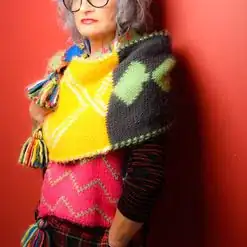This article was co-authored by Traci Halvorson. Traci Halvorson is a Modeling Agent, Former Model, and the Owner of Halvorson Model Management (HMM) in San Jose, California. HMM is a full-service, licensed talent agency representing over 300 professional models and actors. With over 25 years of experience in the modeling industry, Traci specializes in scouting, managing, advising, and launching modeling careers in the Bay Area. Traci holds a BA in Public Relations & Business Management from San Jose State University and also specializes in Marketing, Image consulting, and is a certified Life-Career Coach.
There are 7 references cited in this article, which can be found at the bottom of the page.
wikiHow marks an article as reader-approved once it receives enough positive feedback. This article received 29 testimonials and 100% of readers who voted found it helpful, earning it our reader-approved status.
This article has been viewed 1,077,822 times.
Launching a modeling career is tricky enough, but you'll make it even harder if you don't have a portfolio. The good news is that they're easy to put together, and a good modeling portfolio can make the difference between getting that coveted modeling job and losing it. The bad news is that if you mess it up, it'll certainly cost you jobs, and may even ruin your career before you even get started.
Steps
Getting Ready
-
1Determine your model type. There are many different types of modeling,[1] some with very specific requirements in terms of physical appearance and skill level. While it’s true that the most common types of modeling do require tall, thin people, there are other types of modeling where the preferred body style is more flexible.
- Live modeling is one example where personality is more important than an exact body type or look. Live models represent companies at trade shows, shopping malls, and other venues to promote a particular product or brand. Since live modeling requires interacting with many people, it’s important that the model is outgoing and has a sunny disposition.
- Fashion modeling is the most common type of modeling that people know about. To be a successful fashion model requires a certain height. In the larger markets, such as New York, the minimum acceptable height is 5’10”, while in the smaller markets the minimum is 5’8”. Fashion models must also be quite thin. In terms of looks, a wider range is acceptable, from conventionally beautiful to striking.
- Commercial print modeling is a catch-all for models who appear in advertisements in magazines and newspapers. It can range from swimsuit modeling to portraying a specific role, such as businessperson, doctor, or representative of a particular demographic. Appearance requirements vary with the type of job. For instance, swimsuit models need to be curvy, yet show good muscle-tone, while representatives of a particular demographic simply need to be attractive examples of that demographic.
- Body part modeling showcases a particular body part, such hair, legs, or hands. If you have lustrous hair, graceful hands, or legs that go on forever, consider this modeling type.
-
2Hire a professional photographer. Call some local modelling agencies and find out who they use. Photographers who work in the industry will have experience with models. They will likely also know what agencies generally look for in portfolio pictures and are able to advise you accordingly.Advertisement
-
3Hire a professional make-up artist. If you are lucky, the photographer will sort this out for you, but remember to ask if the cost of the make-up artist is included in the fee, or if you have to pay extra. If the photographer isn't providing one, ask the local modelling agencies to recommend one. As with the photographer, make-up artists in the business will know what’s expected.
-
4Practice posing. Look through magazines to find poses that inspire you. Don’t be afraid to alter them a little to make them your own. Practice them in front of a mirror and change the angle from time to time. Ask a family member or friend to critique your poses as you practice.
-
5Pick out your clothing for the shoot. It’s important to realize that the purpose of your portfolio is to sell you.[2] Eliminate anything that distracts from that purpose. To that end, keep your clothing choices simple. Choose solid colors and stay away from prints and patterns. Opt for clothing that you know fits you well: avoid anything that’s too tight or loose. Your portfolio is also not the place for “fashion-forward” outfits.
- You will need several outfit choices since you don't want to have pictures of you in only one or two.
- If you intend on going into commercial print modeling, it's a good idea to bring a swimsuit, too.
-
6Prepare to demonstrate versatility. Having a number of looks suited to the type of modeling for which you are suited is essential. If the photographer is good, he or she will know what types of pictures and looks you will need.
- Headshots are images where the model's face is depicted clearly. Usually coming in 8x10 sizing, the picture is typically of the model's head and upper torso, taken at close range. It's important that the headshot focus on the face. They are also usually taken with minimal make-up, so that the model's facial structure and skin tone are evident. Every model needs one in his or her portfolio.
- Beauty shots,[3] on the other hand, are artistic images, that like the headshot, are of the model's head and upper body. However, unlike headshots, the model is made-up and may be posed dramatically. If you want to work as a commercial print model, this photograph is a must for you.
- Fashion shots[4] are exactly what they sound like: photographs of the model wearing different outfits, with the focus being on the clothing. Even the model's make-up complements the outfit. These images are for fashion models.
- Swimsuit shots showcase the model's body. This is another photo that you'll need for commercial print modeling.
- Another photo that's important if you want to go into commercial print modeling is the editorial shot.[5] Centered around a story, here's is where you'll be playing a character in a particular narrative.
- Make sure you have your outfits ready at least five days before the day of the shoot.
-
7Maintain your looks. Looking your best at your photo shoot is crucial to your success as a model. Accordingly, perform any routine maintenance on yourself as you need before the big day. For example, have a hair-cut or get a manicure.
- The day before the shoot, make sure you get a good night's sleep and stay away from alcohol.
Taking Photos
-
1Check and double-check your bag. Before leaving the house, make sure that your bag is packed and that you have money for transportation costs and parking fees. Aim to arrive 10 minutes before you are due. Carry the photographer's number on you and give them a call if you realize you might be late.
-
2Communicate with the photographer. Good communication[6] between model and photographer is essential for great pictures. Listen carefully to what the photographer wants. Try not to be nervous, but do acknowledge that the feeling is normal...even models who have been working for years get nervous.
-
3Showcase your confidence and charm. You want your pictures to capture the essence of what you can bring as a model: your vivacity and ability to portray varied characters and moods. Don’t be afraid to show off. This is your time to shine.
-
4Demonstrate proper etiquette. It’s important to build good professional relationships with your photographer and makeup artist. Be sure to write both of them thank you notes after the photo shoot is over.
Creating Your Portfolio
-
1Choose your portfolio shots. Remember quality matters more than quantity. Select 12 to 16 of your best photographs. Enlist family and friends to help you out.
- Make sure that your photos show you in different outfits and in different locations. Also important is including images of you in different lighting, for example, indoors and outdoors.
- The standard photo size is 8x10 inches. Other sizes include 9x12 and 11x14
-
2Arrange your photos for publishing. When a potential client opens your portfolio you want to wow them from beginning to end. Accordingly, include your best pictures, two in the opening and two in the closing pages of your portfolio.
-
3Get a portfolio book printed. Your photographer may offer this service. If not, any photo printing place can do it for you. They can also create a disc of your portfolio, too.
- Another option in addition to a printed version is an online portfolio. It's best to hire someone to design a website to host it rather than trying to do this yourself. Otherwise, it will appear amateurish.
-
4Update your portfolio. As you get modelling jobs and gain experience, add this to your portfolio. Keep “tear sheets,” usually magazine pages or photos from a photo shoot. These demonstrate your success as a model.
-
5Include a profile page. Your profile[7] will list important information about you. Include the types of work you’re willing to do, your statistics, for example, your height, weight, hair and eye color, whether you have any problem areas on your body, for instance, tattoos or scars, and finally, any relevant skills you have, such as knowing a sport, or how to play a musical instrument.
Expert Q&A
-
QuestionHow do I create beautiful shots for my portfolio?
 Traci HalvorsonTraci Halvorson is a Modeling Agent, Former Model, and the Owner of Halvorson Model Management (HMM) in San Jose, California. HMM is a full-service, licensed talent agency representing over 300 professional models and actors. With over 25 years of experience in the modeling industry, Traci specializes in scouting, managing, advising, and launching modeling careers in the Bay Area. Traci holds a BA in Public Relations & Business Management from San Jose State University and also specializes in Marketing, Image consulting, and is a certified Life-Career Coach.
Traci HalvorsonTraci Halvorson is a Modeling Agent, Former Model, and the Owner of Halvorson Model Management (HMM) in San Jose, California. HMM is a full-service, licensed talent agency representing over 300 professional models and actors. With over 25 years of experience in the modeling industry, Traci specializes in scouting, managing, advising, and launching modeling careers in the Bay Area. Traci holds a BA in Public Relations & Business Management from San Jose State University and also specializes in Marketing, Image consulting, and is a certified Life-Career Coach.
Modeling Agent Keep it simple! People tend to overcomplicate things while planning out their portfolio. You just need simple, pretty photos of yourself captured in good lighting without any filters.
Keep it simple! People tend to overcomplicate things while planning out their portfolio. You just need simple, pretty photos of yourself captured in good lighting without any filters. -
QuestionWhat should you always include in your modeling portfolio?
 Traci HalvorsonTraci Halvorson is a Modeling Agent, Former Model, and the Owner of Halvorson Model Management (HMM) in San Jose, California. HMM is a full-service, licensed talent agency representing over 300 professional models and actors. With over 25 years of experience in the modeling industry, Traci specializes in scouting, managing, advising, and launching modeling careers in the Bay Area. Traci holds a BA in Public Relations & Business Management from San Jose State University and also specializes in Marketing, Image consulting, and is a certified Life-Career Coach.
Traci HalvorsonTraci Halvorson is a Modeling Agent, Former Model, and the Owner of Halvorson Model Management (HMM) in San Jose, California. HMM is a full-service, licensed talent agency representing over 300 professional models and actors. With over 25 years of experience in the modeling industry, Traci specializes in scouting, managing, advising, and launching modeling careers in the Bay Area. Traci holds a BA in Public Relations & Business Management from San Jose State University and also specializes in Marketing, Image consulting, and is a certified Life-Career Coach.
Modeling Agent Definitely include a beauty headshot, which is just a pretty photo of you from the shoulders up. Don't wear too much makeup for this shot, and keep your hair down. Also, include a full-length shot in your portfolio.
Definitely include a beauty headshot, which is just a pretty photo of you from the shoulders up. Don't wear too much makeup for this shot, and keep your hair down. Also, include a full-length shot in your portfolio. -
QuestionHow do I create a portfolio when I have no money?
 Community AnswerDo it yourself or get a friend or family member to help. You can take pictures and use those.
Community AnswerDo it yourself or get a friend or family member to help. You can take pictures and use those.
Warnings
- Be aware of tanning before the shoot as tan lines can create problems.⧼thumbs_response⧽
- Be aware that many photographers and make-up artists will have cancellation policies. As a rule of thumb, if you cancel within 48 hours of the starting time of the shoot, you will have to pay at least some, if not all, of the fee.⧼thumbs_response⧽
- Don't assume that the photographer charging you the most must therefore be the best. On the other hand, also remember that you get what you pay for.⧼thumbs_response⧽
References
- ↑ http://www.businessofmodeling.com/modeling-industry/what-are-the-different-types-of-modeling/
- ↑ http://www.businessofmodeling.com/photo-shoot/what-to-wear-proper-clothing-selection-for-your-modeling-portfolio-shoot/
- ↑ http://www.joeedelman.com/blog/photography-how-to/how-to-shoot-models/beauty-shot/
- ↑ http://digital-photography-school.com/10-fashion-photography-tips/
- ↑ http://www.svenler.com/blog/definition-what-is-the-difference-between-fashion-commercial-and-editorial/
- ↑ http://www.modelmanagement.com/modeling-advice/model-photography-tips/
- ↑ http://www.modelmayhem.com/education/modeling/1882-building-your-portfolio
About This Article
To build a modeling portfolio, hire a professional photographer with experience working with modeling agencies to take photographs of you. Before your shoot, look through fashion magazines to find poses that inspire you, then practice them in the mirror. Additionally, select several simple, well-fitting outfits, as well as a swimsuit to bring with you. Generally, your portfolio should include a headshot, a more artistic “beauty shot,” a “fashion shot” where the focus is the clothing, a swimsuit shot, and an editorial shot where you’re playing a character in a particular narrative. To learn how to select and arrange which photos to put in your portfolio, keep reading!
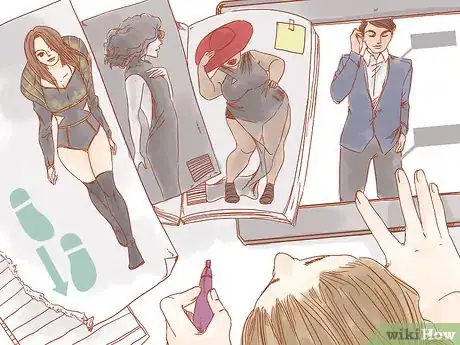
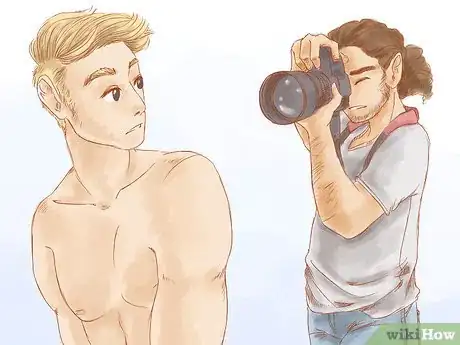

-Step-13-Version-4.webp)
-Step-7-Version-4.webp)
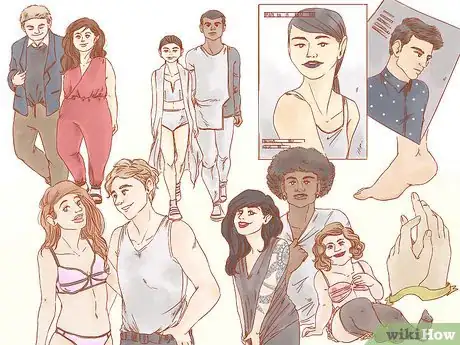

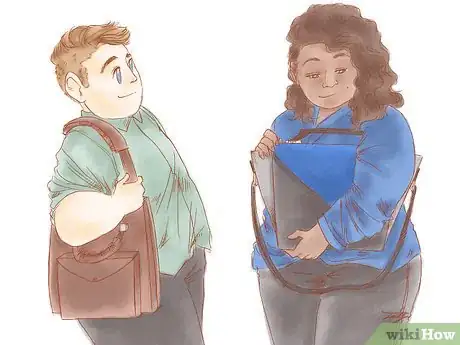
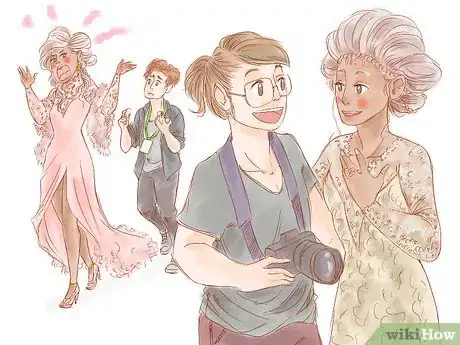


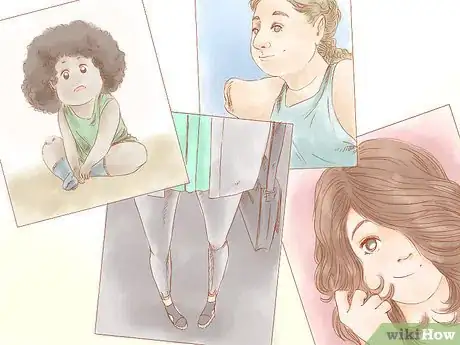


-Step-9-Version-4.webp)
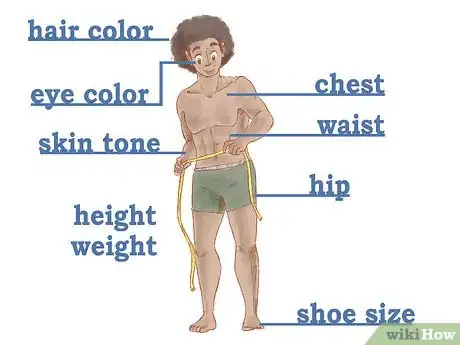






-Step-17-Version-3.webp)









